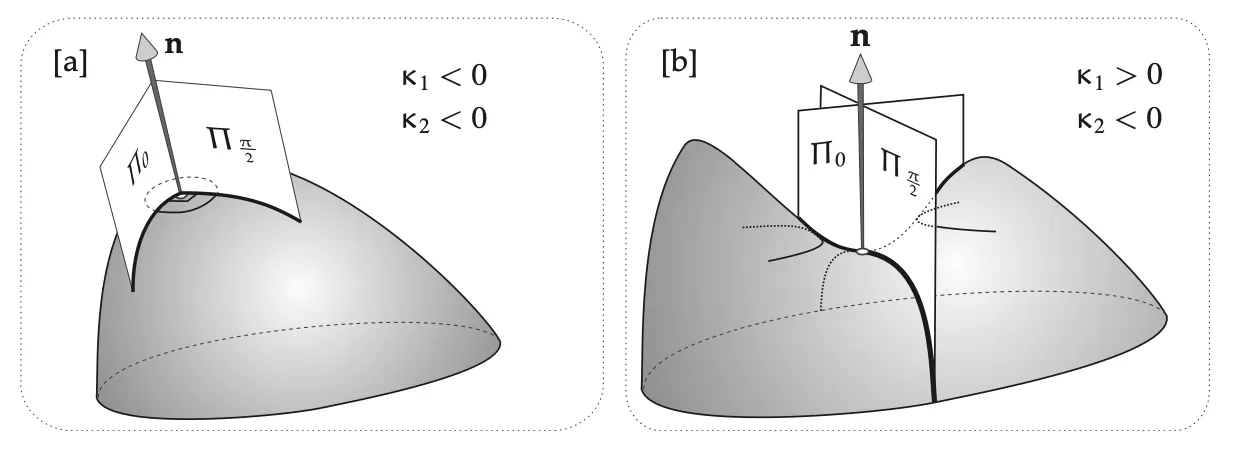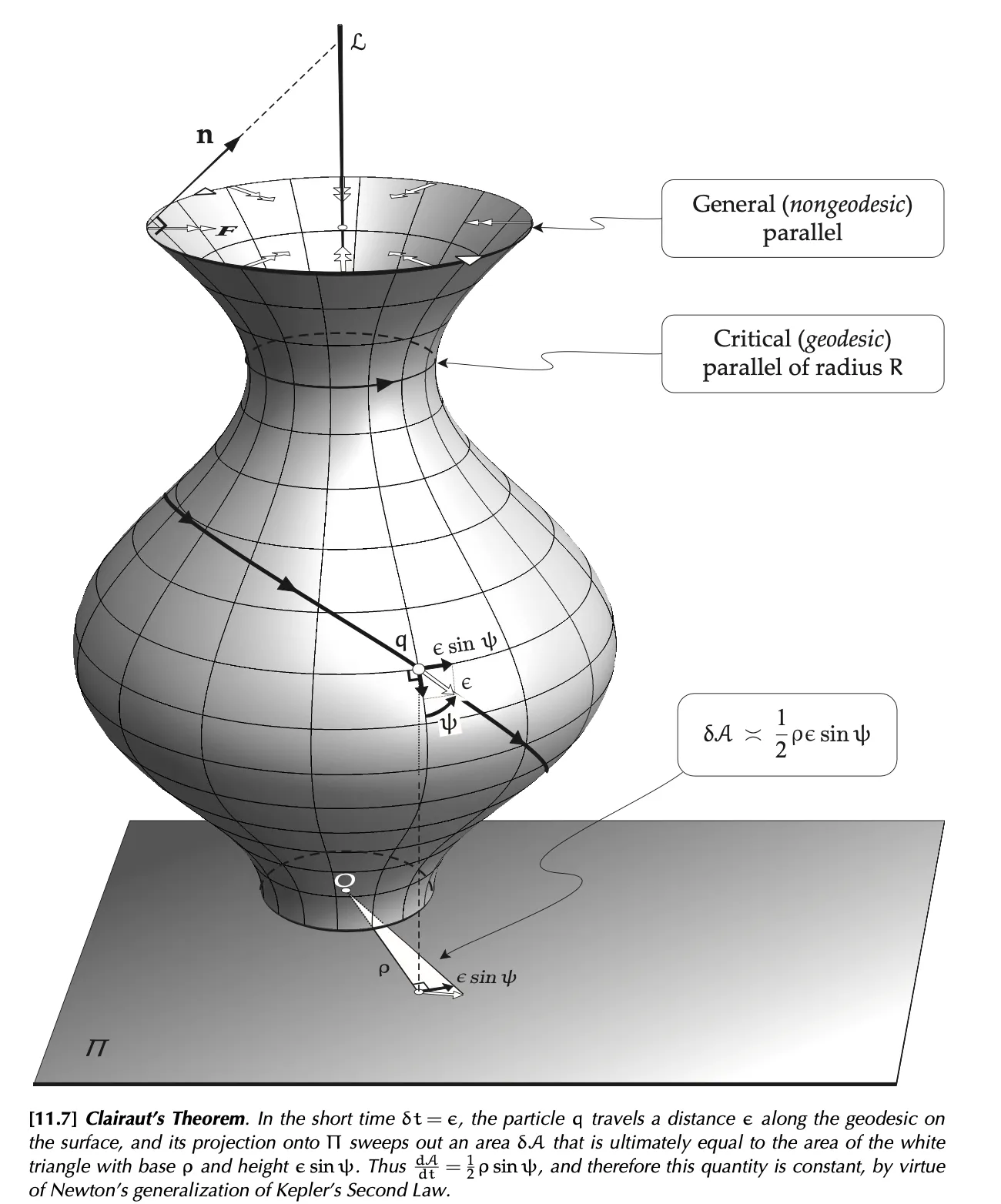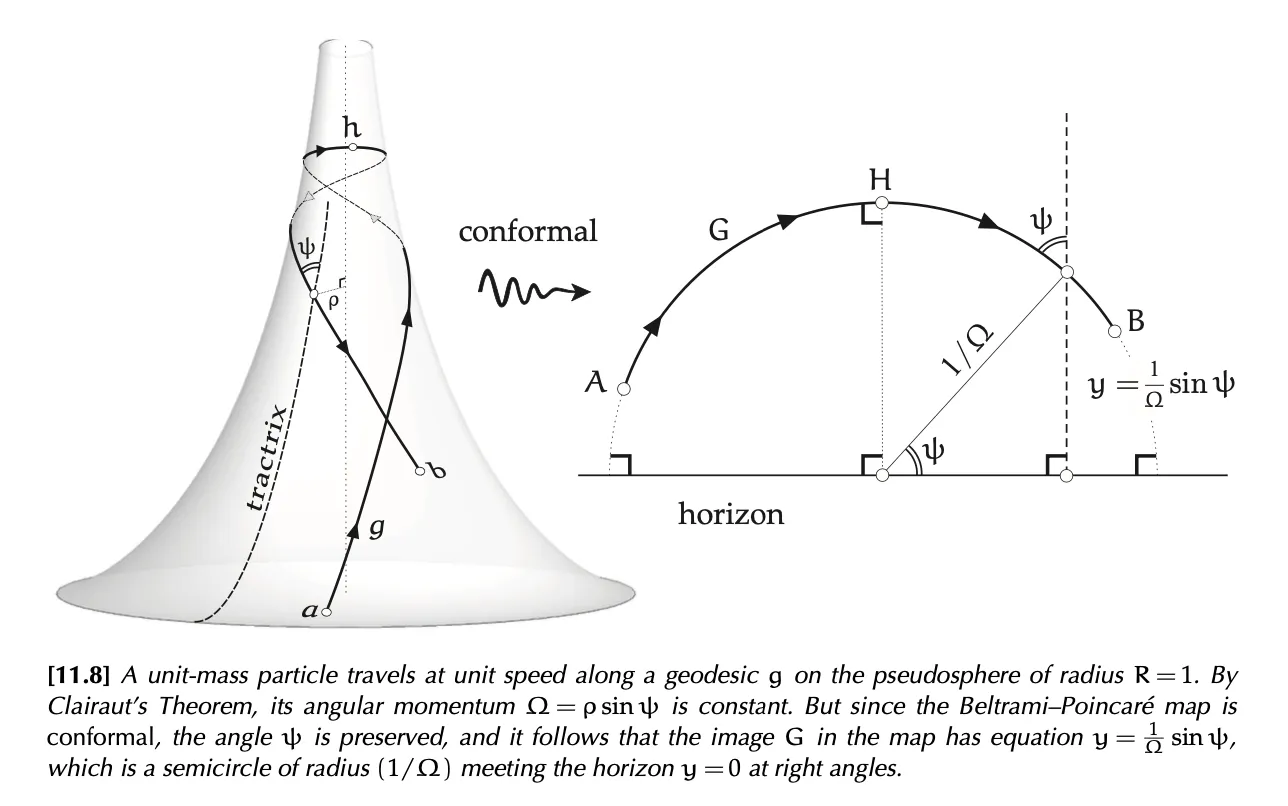Symbolic Dynamics
[Symbolic Dynamics.pdf](Resources/Symbolic Dynamics.pdf)
https://en.wikipedia.org/wiki/Erlangen_program
Limits
Commonly used ultimately equal parts:
- Consider a slice of a unit circle,
where h is the line across the arc, φ the angle. - Given a triangle, draw a perpendicular from a vertex.
The area of the original is ultimately equal to the new one given by
(as long as both edges are infinitesimal).
Curvature
Internal curvature
Define the angular excess
In constant curvature,
Generalizing,
So
Circle of curvature
Characterizations of curvature in 2D:


If tangent is horizontal, Taylor’s theorem implies  .
.
Even more generally, for non-unital speeds we have 
Euler’s curvature formula

Given a point p and direction, we can erect the normal section
WARNING
Locally the surface can be represented by
by appropriate choise of axis. Slicing through the surface with tangent planes parallel to T p, (it turns out) the curves are conic sections (ellipse if κ1,2share a sign and hyperbola otherwise). Moreover, the quadratic equation is homogenous: (produces another solution), so the shape is unaffected by height. Thus the conics all share two perpendicular axes of symmetry. Aligning our coordinate system with these axis, our local equation becomes . And the curvature of our parabola in the plane y=0 is . Finally, for a general angle, which comes out to our result after plugging in.
 (Source)
(Source)
Decomposition of a line curve
We want to consider the component of our osculating plane in the surface. See.
Locally, our curve is a circle in the osculating plane P, containing our curvature vector  .
Note that in general the projected curve is not traversed at unit speed so the projected acceleration has a component tangential to
.
Note that in general the projected curve is not traversed at unit speed so the projected acceleration has a component tangential to
Considering the projections onto the geodesic plane (tangent plane of surface) and the normal section.
It follows

 (
(
Note that
All the curves passing through a point in the same direction have the same
REMARK
Note that
and are different - otherwise . They coincide on a geodesic. Curves with the same normal curvature are differentiated by their geodesic curvatures. By considering the curves created by intersecting an osculating plane in various angles rotated around , one gets a set of curves of increasing geodesic curvature. Also important to note that
does not lie in the normal section in general. This is only true for a principal curvature. i.e. on an ellipse, it’s clear that off an axis, the surface pares away to the side, causing normal to turn outwards. Also evident from a non-closed ellipse geodesic, has to shift along . So only along a principal curvature the osculating plane approximation is locally “faithful” to the actual curve in reflecting the actual change in normal.
Geodesics
On a geodesic, p which is contained in the osculating plane so the geodesic curvature vanishes.
Locally the intersection of the normal section with the surface.
On a oblong ellipse (i.e. earth), the meridians and equator are the only closed geodesics.
REMARK
Principal curvatures restrict T while geodesics restrict
. There is a geodesic through every direction, and multiple curves governed by the direction of the normal for every principal direction. i.e. .
Traveling a geodesic along a principal direction,
and hence stays in the same initial normal section globally. For a general principal curve, the geodesic curvature causes the tangent to deviate from the section. (Do third order effects matter?)
Clairut


Extrinsic curvature
Normal map.
Polyhedral: Consider a point on each side of a polygon adjacent to a vertex, arranged such that the perpendicular lines from each point to the 2 neighboring sides connect up between points.
Then
Shape operator
For a unit vector v in
REMARK
Given a differentiable function of t, interpreted as a function of surface distance s via unit speed velocity, it can also be interpreted as a function from the tangent space since
. Both derivatives can be calculated via pullbacks .
The shape operator
Along a principal direction (since
SF2
Moreover,
PROOF
Project onto normal section Alternatively,
. Alternatively apply Euler’s formula.
In an arbitrary orthogonal basis,
